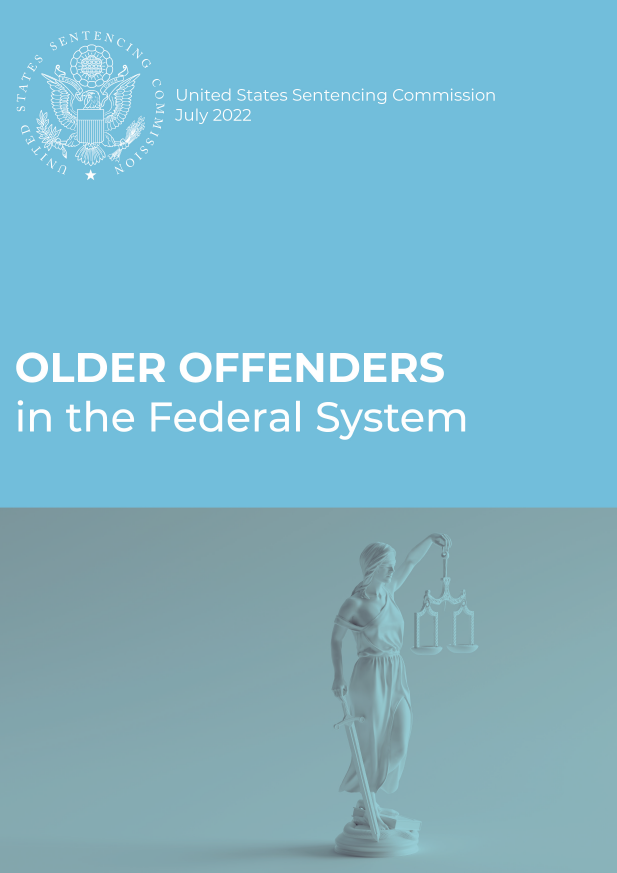Summary

Key Findings
Older offenders commit fraud and sexual offenses at higher rates than all other offenders.
- Older offenders had roughly three times the rate of fraud offenses (17.8%) and a greater proportion of sex offenses (7.3%), compared to offenders under age 50 (6.4% and 4.1%, respectively).
- The rate of offenders committing sex offenses increased incrementally as the age of the offender increased. Offenders 70 and older committed sex offenses at nearly three times the rate (11.9%) of offenders under the age of 50 (4.1%).
Roughly 40 percent (40.7%) of older offenders had a physical disability prior to arrest for the instant offense.
- The rate of offenders with a disability increased incrementally as offenders' age at sentencing increased, so that roughly two-thirds (63.3%) of offenders 70 and older had a physical disability.
About one-third (31.2%) of older offenders had used drugs or misused prescription drugs in the year prior to arrest.
- Among older drug users, the most used substances were marijuana (32.4%) and methamphetamine (28.5%).
Older offenders have less extensive criminal histories, compared to all other federal offenders.
- More than half (52.5%) of older offenders were in Criminal History Category (CHC) I, the lowest criminal history category, compared to 37.5 percent of offenders under 50 years of age.
The overwhelming majority (80.1%) of older offenders were sentenced to prison. However, older offenders were also more likely to receive fines and alternative sentences, compared to offenders under age 50.
- The oldest offenders were the most likely to receive an alternative sentence or fine; roughly a third (31.3%) of offenders 65 through 69 and more than 40 percent (42.1%) of offenders 70 and older received an alternative sentence or fine.
- The oldest offenders were most likely to have received sentences that exceed life expectancy.
Nearly forty percent (38.6%) of offenders who were sentenced at 70 years of age or older received a sentence that exceeds their life expectancy, compared to 7.1 percent of offenders 65 through 69, and less than one percent of offenders under the age of 50.
In fiscal year 2021, a nearly equal proportion of older offenders (36.7%) were sentenced within the guideline range as received a below range variance (35.5%).
- The proportion of offenders receiving variances increased as an offender’s age at sentencing increased, with the oldest offenders being the most likely to receive a variance.
- Offenders 65 and older were nearly as likely to receive a variance (48.9%) as they were to receive a sentence under the Guidelines Manual (51.1%).
The recidivism rate of older offenders (21.3%) was less than half that of offenders under the age of 50 (53.4%).
- As offenders’ age at sentencing increased, recidivism rates decreased.
- Recidivism events for older offenders were less serious, compared to offenders under the age of 50.
- Older offenders take a longer time to recidivate, compared to their younger peers.

